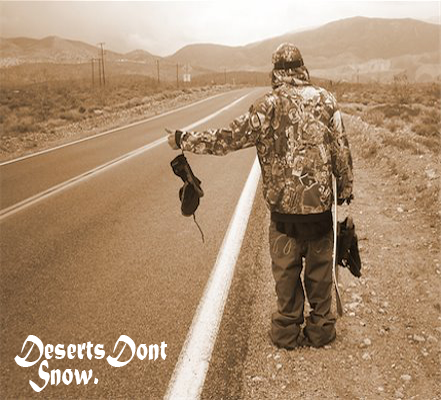First Chair, Last Call
Some of us don't get to ride as much as others, which means when the chance to snowboard does come around it has to be from first chair in the morning to last call in the resort bar later that night. If you don't prepare your legs with exercises like squats or activities like skateboarding, they are going to burn out in a couple of days. Even just standing in place and jumping as high as you can 20 times a day can make an enormous impact on leg strength.
What about how winded you can get just riding a snowboard down a hill? High altitude warnings dictate that at least one week after rising into mountain altitudes you should limit physical activity. For those who only get a two-week snowboarding vacation each year, you don't have one week. A lot of people do not maintain their cardiovascular fitness, so when they go on a shred vacation they go from no exercise all year to a full-day of exertion at an altitude where they can't draw as much oxygen from the air... then they pass out or worse. Swimming underwater, practicing how long you hold your breath, is an awesome way to grow accustom to optimizing the oxygen in your body and making the transition to higher altitudes easier on your lungs.

Maintain a Balance, Spin to Win
Balance is not so much how you manipulate your arms or legs, but more your core's ability to keep things centered. Look at the "extreme gymnastics" seen above; those guys have their legs flailing about as though independent of their bodies. If you neglect your core muscles, it can be the difference between sliding a ten foot rail and sliding a 30 foot rail. Your core also puts the umph into your spin tricks; the prewind and release to initiate spins are 100% core muscles, your arms only serve as weights thrown to hold the spins momentum. Otherwise your core serves to initiate and hold your turns, and it also helps keep you upright in general. The core and the legs are two musclegroups you can't neglect if you want to snowboard.
Brace For Impact
Nobody, and I mean nobody doesn't fall. When you start snowboarding you fall a hell of a lot, and once you've got the basics you'll fall learning learning every new skill from there on out; it's almost guaranteed. In fact many, including myself, have come to understand that snowboarding is nothing more than controlled falling. And as we fall our natural instinct is always hands first. This is why the upper body cannot be taken out of the equation. When you take an impact to your wrist or arms, the muscles and ligaments tense very quickly to oppose the blow. Stiff, unused ligaments are susceptible to snapping when that quick tension occurs. If you aren't taking the time to at least stretch your upper body you are inviting serious injury.
In terms of bone breaking, the force of impact is primarily absorbed by muscle and what bite the muscles don't take off transfers into our bones. So, doing even a few pushups a day helps to keep the muscles in your chest and arms strong enough to avoid minor fractures and breaks. So say you get yourself into some twisted position and not breaking something seems impossible; stretching often improves flexibility and lessens the likelihood of an injury from being put into an awkward position... it's how contortionists do what they do!






















